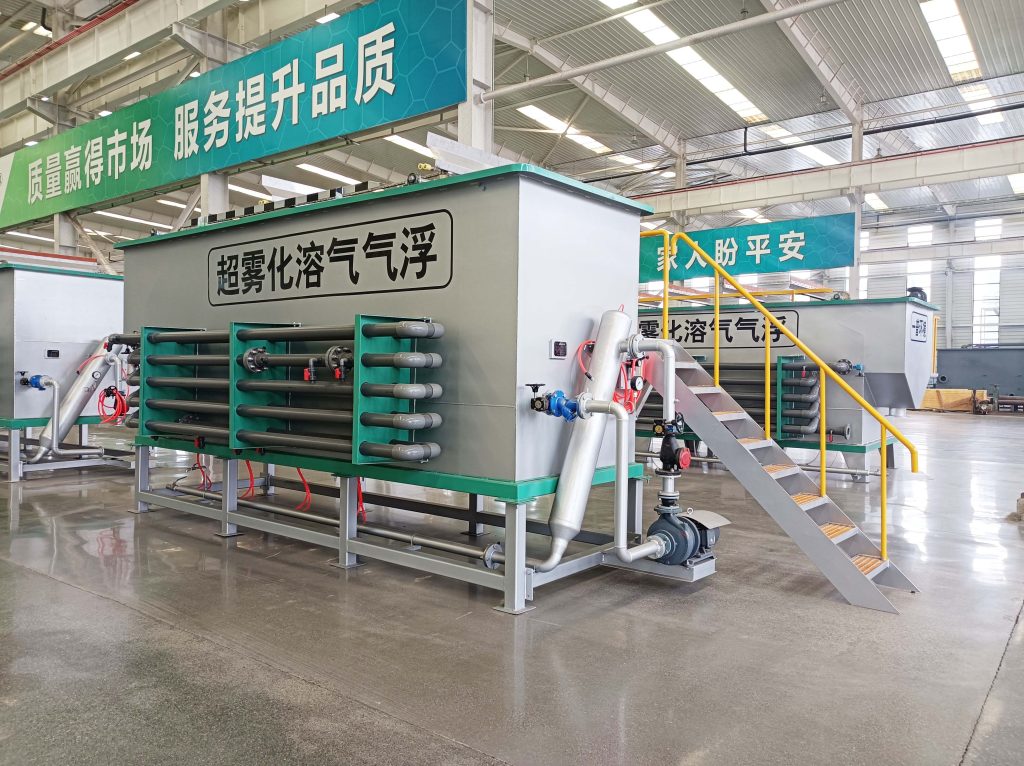Differences between four water treatment systems
Industrial water treatment systems take a variety of forms. Among the most common include the dissolved air flotation system, the water oil separator system, the aerobic treatment system, and the induced gas flotation system. These water treatment systems vary from one another in both their principles of operation and the purposes for which they were designed. Here are some broad differences among these four water treatment systems:
Dissolved Air Flotation (DAF) System
Dissolved air flotation equipment (also referred to as DAF water treatment equipment) is used in many drinking water treatment plants. Dissolved air flotation manufacturers provide a system that includes a flotation tank, a recycle pump that draws recycle water from the effluent water, and an air drum that saturates the recycle water with air. Feed water flows into the flotation tank and effluent water flows out of the flotation tank. Recycled water is drawn from the effluent water and pumped into an air drum. As the recycle water passes into the air drum, compressed air is introduced into the recycle water. The air drum is pressurized, which forces the compressed air to dissolve into the recycled water. The recycled water is fed back into the flotation tank where the pressure is reduced, causing the dissolved air to be released from the recycled water. The bubbles adhere to solid particulates in the water in the flotation tank and carry them to the surface where they form a froth layer that is separated from the effluent water by a skimmer or lamella clarifier.

Water Oil Separator System
A water oil separator system includes a separator with an inlet and an outlet separated by a distance that allows oil to float upward and solids to settle downward as the water travels from the inlet to the outlet. Oil is skimmed from the surface while sludge formed from solids is scraped from the bottom of the separator.
The main difference between the system provided by dissolved air flotation manufacturers and that provided by water oil separator manufacturers is that dissolved air is not used to aid in the separation in a water oil separator system. Rather, a water oil separator system relies solely on Stokes’ Law to provide a sufficient dwell time in the separator for the oil, water, and solids to separate.
Aerobic Treatment System
An aerobic treatment system includes a pretreatment stage, an aeration stage, a settling stage, and a disinfection stage. The aeration stage, in which air is introduced, is the most analogous to a DAF wastewater system. In the aeration stage, a biomass digests biological wastes from the wastewater. The biomass must be exposed to air because the digestion is an aerobic process and an aerobic environment allows the biomass to thrive.
The system provided by aerobic treatment manufacturers and dissolved air flotation manufacturers differ primarily in the purpose of the air that is introduced into the wastewater. In a dissolved air flotation system, the air is introduced to cause solids to float to the surface while in an aerobic treatment system, air is introduced to aid the biomass in their digestion of biological waste in the wastewater.
Induced Gas Flotation System
An induced gas flotation system includes a mechanical device, such as an impeller, to create bubbles in wastewater inside a separator. The air bubbles adhere to suspended solids in the wastewater, causing them to float to the surface to form a froth layer.
While the system provided by induced gas flotation manufacturers and dissolved air flotation manufacturers seem similar, there are differences. First, the air introduced in an induced gas flotation system is merely mixed with the wastewater while the air introduced in a DAF water treatment system is dissolved into the recycled water that is reintroduced into the wastewater. Second, the air introduced in an induced gas flotation system is at ambient pressure while the air introduced in a dissolved air flotation system is pressurized.
In sum, many different water treatment systems introduce air into the wastewater. However, these systems are differentiated by the way in which the air is introduced and the purpose of the air in the process.
